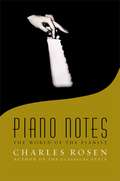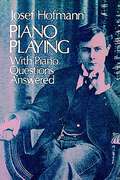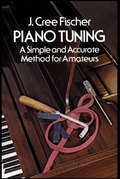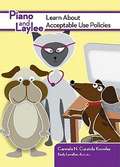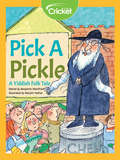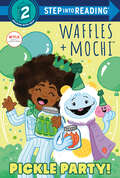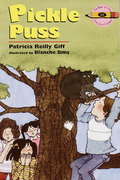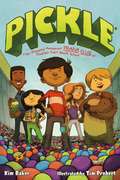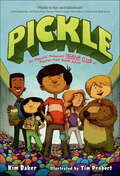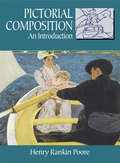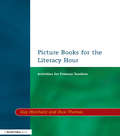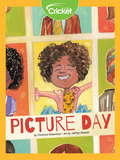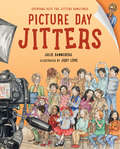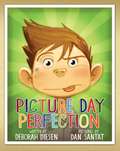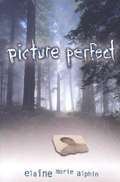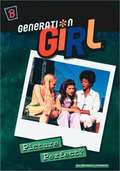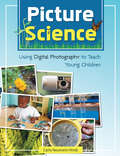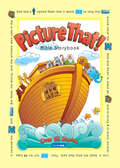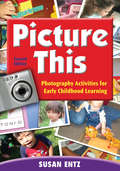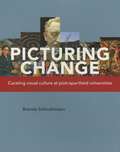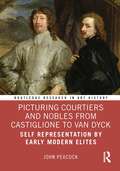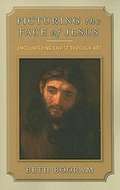- Table View
- List View
Piano Notes: The World of the Pianist
by Charles RosenCharles Rosen is one of the world's most talented pianists -- and one of music's most astute commentators. Known as a performer of Bach, Beethoven, Stravinsky, and Elliott Carter, he has also written highly acclaimed criticism for sophisticated students and professionals. In Piano Notes, he writes for a broader audience about an old friend -- the piano itself. Drawing upon a lifetime of wisdom and the accumulated lore of many great performers of the past, Rosen shows why the instrument demands such a stark combination of mental and physical prowess. Readers will gather many little-known insights -- from how pianists vary their posture, to how splicings and microphone placements can ruin recordings, to how the history of composition was dominated by the piano for two centuries. Stories of many great musicians abound. Rosen reveals Nadia Boulanger's favorite way to avoid commenting on the performances of her friends ("You know what I think," spoken with utmost earnestness), why Glenn Gould's recordings suffer from "double-strike" touches, and how even Vladimir Horowitz became enamored of splicing multiple performances into a single recording. Rosen's explanation of the piano's physical pleasures, demands, and discontents will delight and instruct anyone who has ever sat at a keyboard, as well as everyone who loves to listen to the instrument. In the end, he strikes a contemplative note. Western music was built around the piano from the classical era until recently, and for a good part of that time the instrument was an essential acquisition for every middle-class household. Music making was part of the fabric of social life. Yet those days have ended. Fewer people learn the instrument today. The rise of recorded music has homogenized performance styles and greatly reduced the frequency of public concerts. Music will undoubtedly survive, but will the supremely physical experience of playing the piano ever be the same?
Piano Playing: With Piano Questions Answered (Dover Books On Music: Piano #1)
by Josef HofmannJosef Hofmann (1876-1957) was a master of piano technique and an artist who had few equals at the keyboard. A student of Anton Rubinstein and a leading exponent of the works of Chopin, Liszt, and Schumann, he always balanced his virtuoso playing with a firm adherence to the piece as written. It is this balanced approach to piano playing that he advocates in this highly regarded volume on piano technique.The first section of the book contains a discussion of the rules and tricks of correct piano playing: touch, methods of practicing, the use of the pedal, playing the piece as it is written, "How Rubinstein Taught Me to Play," and indispensables in pianistic success. The second, much longer, section contains Hofmann's answers to specific questions sent to him by piano students and amateurs: questions on positions of the body and hand, actions of the wrist and arm, stretching, staccato, legato, precision, fingering, octaves, the pedals, practice, marks and nomenclature, phrasing, rubato, theory, transposing, and much more.Full of important background information that is highly useful to every piano player, this book will set students on the right track in their studies and allow every amateur to measure the level of his commitment and the quality of the instruction he is receiving. For insight into many facets of playing the piano, there is no better guide than Josef Hofmann.
Piano Technique
by Walter Gieseking Karl LeimerThe volume presents two book by Walter Gieseking, foremost pianist of his generation, and his teacher for five years, Karl Leimer, that have long been sought after by students and teachers looking for a radical approach toward developing not only finger-technique but expression-technique. Emphasis throughout is on listening to one's self and proper understanding as the basis of proper technique for the piano.In book one, originally titled The Shortest Way to Pianistic Perfection, Gieseking and Leimer work with a series of piano works -- a study from Lebert and Stark, Bach's Two- and Three-Part Inventions in C, and Beethoven's Sonata in F Minor, Op. 2, No. 1. Before beginning to play, the student is asked to visualize each piece through silent reading. Through Leimer's instruction in this area the student soon discovers how to approach each piece as not merely a series of notes to memorize but as a coherent musical structure to understand. Following are instructions on natural interpretation, with consideration of touch, relaxation, and proper emphasis in the practice. Also given are notes on such topics as etudes, scales, broken chords, the trill, and tranquility.In book two, Rhythmics, Dynamics, Pedal and Other Problems of Piano Playing, Leimer carries his method of visualization further with a study of the Allemande from Bach's French Suite in E Major. Following are further exercises and practices for developing other pianistic technique with reference to works of other composers. Specific exercises which cover rhythmics, dynamics, and phrasing are designed so that they will benefit not only the pianist but also performers on other instruments. Extensive chapters on variety of touch and the pedal give a great number of techniques and exercises for extending the expressive and dynamic range.
Piano Tuning: A Simple and Accurate Method for Amateurs (Dover Books On Music: Piano)
by J. Cree FischerIf you have a note that has dropped in pitch, do you have to call in the tuner? A stuck key? Sympathetic rattle? Missing bridles? A broken hammer shank? An unglued ivory? The answer, in each case, is no: you can make all of these repairs yourself!This is the clearest and most complete book available for beginning tuners and amateur pianists. It explains all the basic processes practically and with model clarity. A non-musician can use this book without too much difficulty.You will learn how upright, grand, and square actions work, and how to take care of the smallest repairs — repairing stuck keys, poorly adjusted bottoms and capstans, crowded back checks, felts and leather on the hammers, hammer stems; softening damper and hammer felts; installing new bridles; eliminating "sympathetic rattle"; all with a minimum of tools and training.You will learn a professional method of tuning based on slightly flattened fifths, where only the octave and the upward fifth intervals are used. This is one of the easiest systems to learn, one capable of a great deal of control, and one perfectly suited to adjusting one or two keys. It is a tested method especially right for amateurs working without a teacher, and a method that trains the ear for other recommended systems. The author also explains "beats," the theory of the tempered scale, and useful experiments you can make with harmonic phenomena.If you want to experiment with tuning a piano, there is no better book to start with. It will help performers and teachers make occasional repairs and learn the structure and scale of the piano. Those who want to know how pianos work will find this book both clear and useful.
Piano and Laylee Learn About Acceptable Use Policies
by Carmela N. Curatola Knowles Emily LewellenIn school, Piano logs in to a game using Laylees password, which prompts their teacher, Miss Paige, to give a lesson on the schools Acceptable Use Policy (AUP). The class learns what an AUP is and why it is so important. ISTE is excited to announce our first books for early readers The titles in the Piano and Laylee Learning Adventures Series are invaluable resources for educators and parents wanting to introduce digital citizenship concepts to children aged 5-9. Designed to be read to and shared with early readers, the books follow the adventures of two adorable puppies who learn how to be safe and responsible when using technology. These books are perfect for classroom lessons on digital citizenship or for starting conversations at home.
Pick a Pickle: A Yiddish Folktale
by Lauren OrmeIn this Yiddish folk tale, the Rabbi of Chelm is sick of everyone coming to him to kvetch. Every day, he must listen to them complain about their daily plights, even before he has had his breakfast! To lessen his burden, he comes up with a solution to fix everyone’s problems—all they need is a new pickle.
Pickle Party! (Step into Reading)
by Frank BerriosNetflix's Waffles + Mochi is an all-new children&’s show from President Barack and Michelle Obama&’s production company, Higher Ground Productions! Waffles and Mochi&’s friend Kennedy loves all kinds of pickled food. But when they try to get pickles for her birthday party, Waffles and Mochi learn that pickles aren&’t made quickly. Boys and girls ages 4 to 6 will love all the delicious details in this Step 2 Step into Reading leveled reader, which includes over 30 stickers. Step 2 readers use basic vocabulary and short sentences to tell simple stories. Step 2 is for children who recognize familiar words and can sound out new words with help. Join Waffles and Mochi for global adventures that reveal the stories behind our food. Produced by President Barack and Michelle Obama&’s Higher Ground Productions and streaming on Netflix, Waffles + Mochi is an entertaining mix of puppetry, animation, celebrity chefs, and famous guest stars. This delightful new show introduces young children and their families to a world of cooking and fearless eating.
Pickle Puss (The Kids of Polk Street #12)
by Patricia Reilly GiffIt's August, and Emily has big plans at the library. She's going to read lots of books and tack a paper fish next to her name for each one. <P><P>Then Dawn Bosco says she can read more books than Emily. Not only that, both Emily and Dawn want to keep Pickle Puss, a stray cat they found. They decide that whoever reads the most books can keep cat. <P><P>When Emily adds a fish for a book she read along time ago, she has one more fish than Dawn. She knows she's cheating, but she wants to keep the cat. What a pickle she's in.
Pickle: The (Formerly) Anonymous Prank Club of Fountain Point Middle School
by Kim BakerUsing a bogus name, the League of Pickle Makers, sixth-grader Ben and three recruits start a prank-pulling club and receive funding from their middle school's PTA.
Pickle: The (Formerly) Anonymous Prank Club of Fountain Point Middle School
by Kim BakerThis is the story of THE LEAGUE OF PICKLEMAKERS Ben: who began it all by sneaking in one night and filling homeroom with ball-pit balls.Frank: who figured out that an official club, say a pickle-making club, could receive funding from the PTA.Oliver: Who once convinced half of the class that his real parents had found him and he was going to live in a submarine. Bean: Who wasn't exactly invited, but her parents own a costume shop, which comes in handy if you want to dress up like a giant squirrel and try to scare people at the zoo.TOGETHER, they are an unstoppable prank-pulling force, and Fountain Point Middle School will never be the same. Latino Interest.
Pictorial Composition: An Introduction
by Henry Rankin PooreA painting's technique, color, and perspective may all be excellent, yet the painting will fail unless its composition succeeds. Composition is the harmonious arranging of the component parts of a work of art into a unified whole. Henry Poore examines the works of old masters and moderns in this book and uses these examples to explain the principles of compositions in art.All the paintings that the author analyzes are illustrated in the text -- 166 illustrations, including 9 in full color. Thirty-two diagrams by the author accompany his textural discussion of such topics as the importance of balance, entrance and exit, circular observation, angular composition, composition with one or more units, and light and shade. Balance is the most important of these topics, and it is considered in the greatest detail -- balance of the steelyard, vertical and horizontal balance, and so on. A complete index enables the reader to locate his own specific areas of interest.To see how a painting by Cézanne, Goya, or Hopper, for example, follows definite principles of composition allows the practicing artist or art student to learn composition from the finest instructors -- the artists themselves. This book is also very useful to the art devotee, who will find his appreciation of the subject greatly enhanced.
Picture Books for the Literacy Hour: Activities for Primary Teachers
by Huw Thomas Guy MerchantFirst Published in 2000. Routledge is an imprint of Taylor & Francis, an informa company.
Picture Day
by Christina RobertsonIt’s picture day at school! While Vivie’s mother wants her to dress nice, Vivie hates all her dress clothes. Instead, she decides to dress in her favorite clothing, including a cat shirt, blue tutu, and purple cowboy boots. Will Vivie stand out in her photo?
Picture Day Jitters (The Jitters Series)
by Julie DannebergIn this installment of the best-selling, classroom classic Jitters series, it's not the first day, but it is picture day, and Mrs. Hartwell wants her students looking their best.The class photo is scheduled for the end of the day—can everyone's favorite teacher, Sarah Jane Hartwell, keep them looking neat and tidy? She has the jitters again! Mrs. Hartwell is determined to keep her students looking perfect for their school pictures. This means no chalk at recess, no experiments during science, and eating lunch in the classroom instead of the cafeteria. Bo-ring! By the end of the day, the students look their best, but their smiles are missing. Mrs. Hartwell lets them cut loose after their individual photos are taken, forgetting that the class photo is still to come! A funny and heartwarming addition to the beloved series that reminds readers that everyone gets the jitters!
Picture Day Perfection
by Deborah DiesenIt’s picture day, and the boy at the center of this charming picture book wants to make sure his picture is perfect. It seems as though everything’s going wrong for him?he has bedhead, a stained shirt, and a big scowl on his face. But when he goes up for his picture, he thinks about his terrible appearance, and he smiles?because he secretly wants his picture to be the worst ever taken! But just as he smiles, the photo is snapped and his plan is ruined?the photo looks great. Perfectly paired with the larger-than-life silliness of Dan Santat’s illustrations, this is sure to be a schoolroom favorite. It will come bound with a picture frame in the back so readers can add their own class photos to the book.
Picture Inclusion!: Snapshots of Successful Diverse Classrooms
by Whitney H. Rapp Katrina L. Arndt Susan M. HildenbrandPicture one guidebook that gives you the fundamentals of inclusion, proven practices for teaching everyone, and dozens of student profiles and sample lesson plans. That's what you'll get in Picture Inclusion!, your ultimate theory-to-practice guide to teaching every learner in a diverse inclusive classroom.
Picture Perfect
by Elaine Marie AlphinWhen his best friend vanishes, Ian sets out to discover what happened. A gap in his memory the afternoon that his best friend disappears in a redwood forest has a fifteen-year-old photographer wondering about his own role in the mystery, and who he can turn to for help.
Picture Perfect? (Generation Girl, #5)
by Melanie StewartAlways calm and cool, Lara has a great life. But her parents are fighting more than usual. It's a good thing she has friends to turn to when life gets complicated. Or does she?
Picture Science
by Carla Neumann-HindsMake digital photography an important part of your early childhood program!Young children love to investigate the natural world, and they love to take photographs.Picture Science will help you go beyond just documenting class projects. It will show you how to use digital photography to make each step in the scientific process-from posing a question, to gathering data, to showing your findings-concrete and fun for children.Keyed throughout to early learning standards, Picture Science provides inspiring examples that will stimulate you to design your own lesson plans. Technical advice and tips for buying a camera for your center or family child care business are included as well.Picture Science won the prestigious 2007 Directors' Choice Award and Judges' Selection Award from Early Childhood News
Picture That! 2: Bible Storybook
by Garry Colby Tracy Harrast"Now children age six and under can read about some of the most remarkable stories in Amazing Stories of the Bible! This easy-to-read, interactive book encourages reading development and Bible learning at the same time. Using the same format as Picture That! Bible Storybook, this fun, easy-to-read book features some pretty amazing stories. Based on the New International Reader’s Version® (NIrV—The NIV for kids!), Amazing Stories of the Bible is reading at it’s easiest! Written by best-selling author Tracy Harrast, this fun Bible storybook includes: • More than 60 Bible stories that will amaze and inspire new readers. • More than 90 full-color picture icons that encourage beginning readers to jump from picture to picture, as they try to read words in between. • Bold, colorful full-page illustrations • Plus a “What did you learn?”—One-line lesson summaries at the end of each story that help children remember and apply what they learn. Unique and creative—Amazing Stories of the Bible is bound to become a favorite."
Picture That!: Bible Storybook
by Tracy HarrastNow that they know their ABCs and 1-2-3s, are your children ready to start reading? The Picture That! Bible Storybook will help kids ages 6 and under feel like reading is easy-and fun too! This picture reader sprinkles over 90 full-color picture icons into more than 65 Bible stories. Noah and the ark full of animals, David and the giant, Jesus calming the storm, the angel at the empty tomb-these are just a few of the Old and New Testament stories your kids will be reading-yes reading! The icons will encourage them to jump from picture to picture and then try to read some words in between. To help keep things interesting, various layouts with full-page illustrations and some larger picture icons fill the pages of the Picture That! Bible Storybook-readers will be excited to see what's coming next! And at the end of each story, a simple, one-line lesson helps children remember what it teaches and offers to apply what they learn. Based on the New International Reader's version (the Bible translation for beginning readers), the Picture That! Bible Storybook is reading at its easiest. This unique, creative book is bound to become a favorite with children and parents alike. Written by best-selling author Tracy Harrast.
Picture This: Photography Activities for Early Childhood Learning (2nd Edition)
by Susan G. EntzThis edition explores expanded photography options, covers 10 subject areas, includes sample lessons, provides new activities for children with special needs and toddlers, and incorporates assessment, standards, and documentation.
Picturing Change: Curating visual culture at post-apartheid universities
by Brenda SchmahmannAn in-depth look at the evolving ethos of curating and collecting art at South African universities. In Picturing Change, Brenda Schmahmann explores the implications of deploying the visual domain in the service of transformative agendas and unpacks the complexities, contradictions and slippages involved in this process. She shows that although most new commissions have been innovative, some universities have acquired works with potentially traditionalist - even backward-looking - implications. While the motives behind removing inherited imagery may be underpinned by a desire to unsettle white privilege, in some cases such actions can also serve to maintain the status quo. This book is unique in exploring the transformative ethos evident in the curation of visual culture at South African universities. It will be invaluable to readers interested in public art, the politics of curating and collecting, as well as to those involved in transforming tertiary and other public institutions into spaces that welcome diversity. Since South Africa's transition to democracy, many universities have acquired new works of art that convey messages about the advantages of cultural diversity, and engage critically with histories of racial intolerance and conflict. Given concerns about the influence of British imperialism or Afrikaner nationalism on aspects of their inherited visual culture, most tertiary institutions are also seeking new ways to manage their existing art collections, and to introduce memorials, insignia or regalia, which reflect the universities' newfound values and aspirations.
Picturing Courtiers and Nobles from Castiglione to Van Dyck: Self Representation by Early Modern Elites (Routledge Research in Art History)
by John PeacockThis interdisciplinary study examines painted portraiture as a defining metaphor of elite self-representation in early modern culture. Beginning with Castiglione’s Book of the Courtier (1528), the most influential early modern account of the formation of elite identity, the argument traces a path across the ensuing century towards the images of courtiers and nobles by the most persuasive of European portrait painters, Van Dyck, especially those produced in London during the 1630s. It investigates two related kinds of texts: those which, following Castiglione, model the conduct of the ideal courtier or elite social conduct more generally; and those belonging to the established tradition of debates about the condition of nobility –how far it is genetically inherited and how far a function of excelling moral and social behaviour. Van Dyck is seen as contributing to these discussions through the language of pictorial art. The book will be of interest to scholars working in art history, cultural history, early modern history and Renaissance studies.
Picturing the Face of Jesus: Encountering Christ through Art
by Beth BooramFor many who identify themselves as Christians, Jesus has never become experientially personal or real. Countless others who have faithfully followed Christ confess to a spiritual dryness and lack of joy. These individuals are weary and unmoved by the plethora of information about Jesus. What they long for is an experience with Jesus.Picturing the Face of Jesus is an invitation to experience Christ more deeply. Through a rich palette of experiential media—art contemplation, gospel story-telling, and imaginative prayer—the reader is invited to picture the face of Jesus, his expressive, one-of-a-kind, human face. As a result, Jesus will become a real person with whom they candidly relate, instead of a hero they merely admire. Through this encounter, their own hearts will be transformed as they begin to reflect the face of Christ to others.
